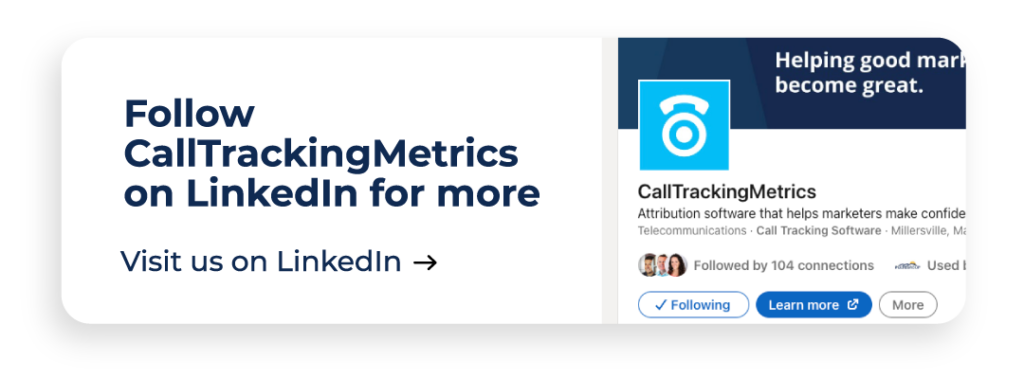Benefits of Marketing Attribution: The Ultimate Guide
Read time: 12 minutes
Table of Contents:
Introduction
Section 1: What Is Marketing Attribution? (& Why Does it Matter?)
Section 2: Types of Marketing Attribution
Section 3: Five Benefits Of Marketing Attribution
Section 4: Terms To Know
Section 5: Use Cases and Case Studies
Section 6: How to Get Started with Marketing Attribution
Section 7: What to Look for in Marketing Attribution Software
Final Thoughts
Introduction
The vast benefits of marketing attribution are important to marketers and sales teams alike. With the right marketing attribution software, organizations can get all of the data they need to make impactful business decisions, improve productivity, and drive revenue.
Marketing attribution gives insight into customer behaviors, and needs, as well as how marketing and sales efforts are performing. Implementing marketing attribution is an essential step for organizations needing a clear picture of which touchpoints and messages resonate with prospects, which drive conversions, and which aren’t doing so great–and so much more.

What is Marketing Attribution (and Why Does it Matter)?
Marketing attribution refers to tracking and connecting texts, live chats, emails, and form fills–any customer communications–back to the specific channel(s) that your audience interacted with from your brand. Call tracking is one form of marketing attribution that’s often overlooked, but we happen to care a lot about it at CTM.

With a full attribution picture, teams know precisely which ad campaigns are driving the most revenue and organizations learn more about their customers’ pain points and how their brand can solve those problems.
From knowing which ad campaign is working best to gaining a better understanding of your customer’s entire buying journey, something as seemingly small as attribution data can boost organizations and their success.
Call Tracking’s Role in Marketing Attribution: Get the Full Picture
It’s important to mention that digital marketing is often focused on attribution for online activities. Getting data on website visitors from Google Ads, organic search, and social media ads is a big priority for marketers. However, many marketers are only looking at this online data and missing a critical piece of the equation: offline activities.
Many are struggling to connect offline activities like phone calls to the marketing efforts driving them. When you aren’t adding offline activities into the mix, you’re only getting part of the picture. Without this data, you won’t get full visibility into your ads, campaigns, or keywords performance.
“I often tell our clients that marketing without call tracking isn’t much different than gambling. If you don’t know what works and what doesn’t, achieving sustainable success in marketing is highly unlikely.”
Often, when a customer or prospect picks up the phone, the marketing trail goes cold. Organizations can’t connect this offline activity with online behaviors, leaving gaps in attribution. You don’t know the first place they interacted with your brand, the last, or any in-between. So, when it comes to attributing that sale, what bucket does it go in? When sales made by phone aren’t counted, data gets skewed.
Many times this skewed data is what marketers are basing their strategies (and budgets) on. When you use call tracking as part of your attribution strategy, these gaps are closed and you get full, comprehensive attribution data. With this full picture, you can then make impactful, strategic marketing decisions using the right data and consistently prove ROAS and ROI. Call tracking adds more benefits to marketing attribution making it comprehensive.
Call tracking connects calls through dynamic number insertion (DNI). With DNI, a person who views your ad results in a phone number specific to that ad. Numbers are dynamically swapped, based on where that visitor is coming from and what ad they saw. With call tracking, you get this vital data right alongside attribution from digital interactions.
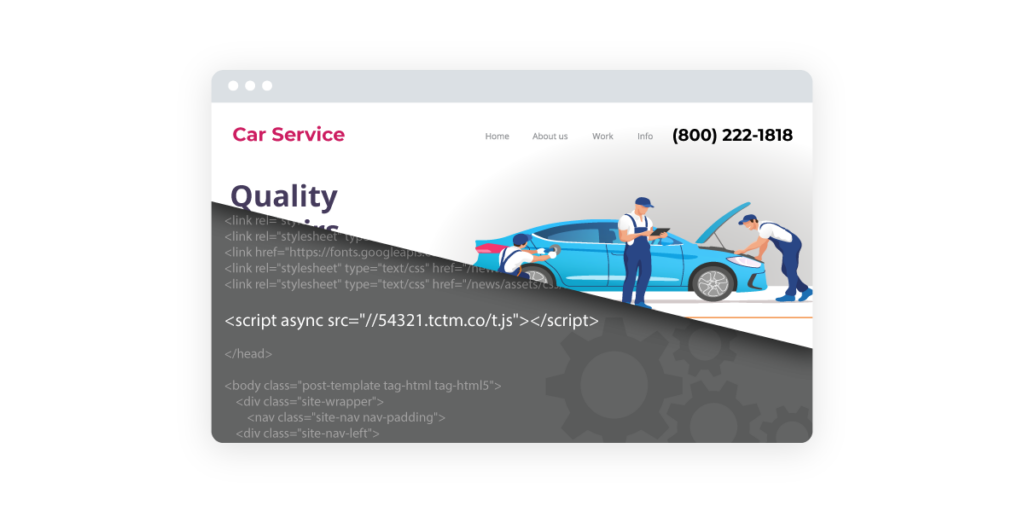
What is DNI? Dynamic number insertion is simply the use of a code on your website that dynamically responds to visitors based on where they’re coming from.
Many marketers already have a tried-and-true tech stack to support CRM and attribution metrics. Tools like HubSpot, Google Ads, Google Analytics, and Salesforce are often go-tos. Call tracking and marketing attribution platforms like CallTrackingMetrics offer opportunities to integrate with marketers’ favorite tools.
CTM offers many no-code, low-code integrations, with must-have tools as well as an open API developers love.
With these tools connected and data all in one place, teams will easily know:
- Which ads are driving high-value conversions
- Which campaigns are prompting the most calls and conversions
- How your messaging is received by your audience
- Where marketing dollars should be spent for the greatest impact
These are just some of the general benefits of marketing attribution. The type of attribution you use, and the tools you choose, in part determine the total capabilities.

Types of Marketing Attribution
There are different types or models of attribution, including more traditional types of models and other multi-touch models. Each model offers different benefits and should be aligned with your specific goals. Keep in mind that these goals will most likely change over time and you’ll want to use different models to meet different objectives.
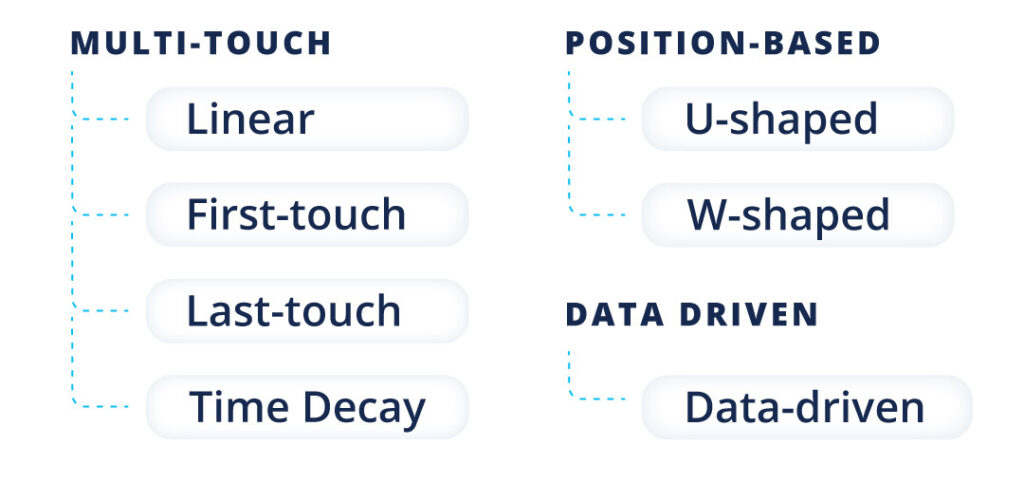
Traditional models:
Traditional models look at just one touchpoint–the first or last–and credit it for the conversion.
- First Touch
- Last Touch
Multi-touch Models:
Multi-touch attribution models give credit in different amounts to multiple touchpoints in the buyer’s journey.
- Linear
- Time decay
- Position based
- U-shaped
- W-shaped
- Z-shaped
The benefits of marketing attribution are great, and when you add call tracking they’re even greater. Though each of these models listed is used for a slightly different goal or perspective, they all offer many of the same benefits.

5 Benefits of Marketing Attribution
Marketing attribution helps to align sales and marketing teams and helps both teams maximize productivity and drive efficiency. As mentioned, exactly what you get out of marketing attribution depends on the type of attribution model used and the capabilities of your marketing attribution software. Overall, some of the main benefits of marketing attribution include:
1. Maximize Ad Spend Budgets
Who doesn’t want to maximize their budgets? Using multi-touch marketing attribution models (paired with call tracking) you can do just that. Marketing teams get first-hand, real-time insight into all of their marketing ads, campaigns, and channels.
This lets teams really see how customers and prospects are interacting with all of their touchpoints on the journey. For example, teams can determine:
- Which channels are getting the most engagement
- Which messages grab your prospects’ attention
- Which messages lead to the most conversions
- Which channels lead to the most conversions
- Which products/services entice prospects to engage
- Which campaigns lead to the highest revenue deals
There is so much valuable data and information in marketing attribution. Teams are able to get insight into their prospects and customers from first-party data. This is becoming more and more important with the promised demise of third-party data and cookies.
When teams have this information, they can focus money on which ads, campaigns, and channels are working best and fine-tune messaging across all channels. No more wasting money on ads and campaigns that are not working; with the right information, teams can consistently maximize their budgets and be more effective.
2. Prove ROI and ROAS
With closed-loop attribution and a full picture of your ads, campaigns, engagement, and conversions, you can prove time and time again which ads are:
- Driving conversions
- Driving the highest-value conversions
- Failing to convert
- Delivering the most profits
Imagine walking into every meeting with your boss, stakeholders, and executive team armed with clear, comprehensive data for all of your marketing efforts. You can relax with full data that proves your team’s efforts and effectiveness and executives can rest assured knowing marketing is in good hands. Clear analytics and reporting make it simple to see your data and create easy-to-digest reports that clearly demonstrate results.
3. Understand Your Ideal Customer
Marketing attribution provides a better understanding of your ideal customer. Essentially, with the right marketing attribution software, you’re a fly on the wall of your customer’s journey and interactions with your brand.
When this information is consistently tracked, using marketing automation tools, patterns in behaviors are easily visible. With AI-powered tools like conversation analytics, AskAI, transcriptions, and keyword spotting, you can assess the online and offline behaviors of your highest-value customers. With this information, you can determine which ads, channels, messages, and even products or services make these valuable customers convert.
From the ad channel that first grabbed their attention and the content they viewed or downloaded along the way to the channels and campaigns that convert the majority of your ideal customers, you’ll know what makes your customers tick, which messages resonate with them the most, and where they like to engage with your brand the most.
This leads to better-developed buyer personas and content.
4. Improve Lead Volume and Quality
Teams who are equipped with details about their ideal customer are better prepared to create better content that is more targeted and refined for the audience. When this fine-tuned content is placed on the channels where your audience spends most of their time, you’ll connect with more leads.
What’s more, once you know the messaging that resonates best with your target audience, you can optimize all of your ads and campaigns to draw in even more leads. When you use marketing attribution to its full capability, you’ll be bringing in more qualified leads with the data and insights you gain.
More leads and better-qualified leads mean more revenue.
5. Optimize Content and Messaging
When you have a better understanding of your audience and what’s resonating with them, marketing teams can create more targeted content. This is not only helpful in attracting and engaging customers, but this targeted content can be shared with the sales team so they, too, can provide more valuable information to customers and prospects.
Using marketing attribution, teams see which of the messages and keywords are attracting the right audience–and which are falling short. This enables marketers to fine-tune or completely revamp messaging to connect with customers and prospects better. Using this type of software, such as an online AI video generator, lets you continually view and assess this information in real time, allowing marketers to pivot quickly when certain pieces of a campaign aren’t working as planned.
Additionally, teams get firsthand insight into which channels customers are engaging with the most (and which of these channels lead to the most high-value conversions). This also allows marketers to focus on the channels working best and either adjust ads, keywords, and messaging on other channels or forgo them altogether.
When you have full attribution, which call tracking makes possible, you can really see what’s working best and what’s not. No more guessing–marketing attribution lets you know for sure.
In addition to messaging and channels, teams also get insight into the type of content customers and prospects like the most.
- Does your audience like to watch short videos?
- Do they prefer a longer eBook they can dig their teeth into?
- Do they like infographics for quick bits of information?
Marketing attribution lets teams see this too. And again, it’s important to realize that for full, closed-loop attribution, call tracking is needed to connect offline activity with online efforts and behaviors. This data helps these teams accomplish more with less and increase efficiency.

Terms to Know
- Attribution – Attribution, in marketing and sales, refers to connecting an action by a customer or prospect to an ad or campaign.
- Call attribution – This is tracking and attribution of phone calls to their source. Depending on the marketing attribution software used, you can track it down to the keyword level.

- First-touch attribution – As mentioned, this type of attribution model gives total credit to the first interaction the customer had with your brand.
- Last-touch attribution – Like with first-touch attribution, last touch, as the name implies, gives 100% credit to the last touchpoint on the customer’s journey.
- Marketing attribution models – This refers to different types of attribution models for marketing as mentioned above. Generally, there are traditional and multi-touch type models with various models under both.
- Multi-touch attribution – There are several types of multi-touch marketing attribution models as mentioned. In addition, some platforms allow for customizable multi-touch models. With this type of attribution model, you can credit multiple touchpoints in the buyer’s journey with the conversion. This helps ads and campaigns all get the credit they deserve in moving the customer down the sales funnel.
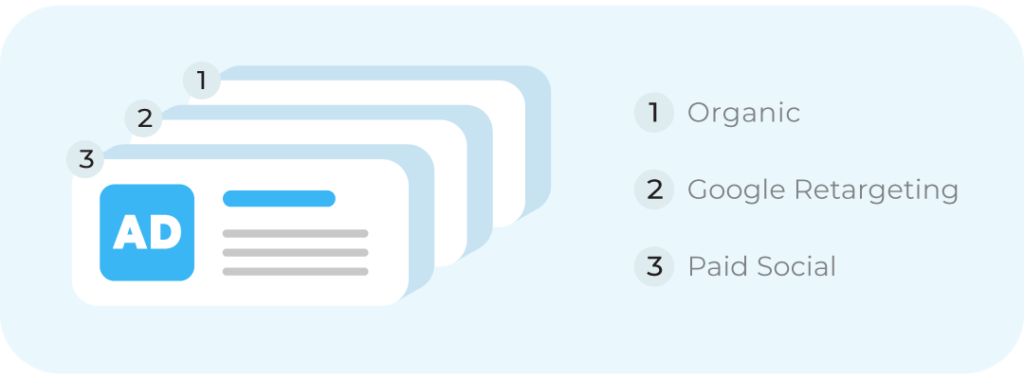
- Paid Ads – These are ads that companies pay for on a pay-per-click, or other pay-per, basis. Bidding is typically based on keywords and this is an area that most attribution models heavily focus on.
- Return-on-ad-spend (ROAS) – This is the revenue driven by every dollar spent for paid ads like Google, Bing, LinkedIn, etc.
- Return-on-investment (ROI) – Overall term to identify how much profit a particular marketing effort is generating.
- Sales attribution – Often used interchangeably with marketing attribution and attribution, this term refers to tracking and attributing sales and conversions back to the channel and ad that drove it.
- Traditional marketing attribution models – These include models that have one touchpoint given credit for a defined conversion like a sale.

Marketing Attribution Case Studies and Use Cases
Marketing attribution is important for any organization to maximize its budget and gain true insight (and data) into which of its marketing efforts are working best and which aren’t working at all. Without this valuable data, you’re playing a guessing game.
Take a look at some of the results our customers have experienced with our marketing attribution tools:
Leadhub: 88% increase in page-one rankings and a 103% increase in conversion rates.
Read Leadhub’s Case Study
Four15: After adding call tracking, they identified 57% of SEM leads were from phone calls.
Read Four15’s Case Study
Stackmatix: Accurately attribute 40% of conversions to Google Ads.
Read Stackmatix, Tutor Doctor’s Case Study
Black Propellor: 70% increase in customer retention rates.
Read Black Propellor’s Case Study
Phoenix Rising: Gained a full spectrum view of phone call attribution
Read Phoenix Rising’s Case Study
Loud Rumor: 66% close rate is now correctly attributed to paid ads.
Read Loud Rumor’s Case Study

How to Use Marketing Attribution
If you’re new to marketing attribution, knowing where to begin can be a bit overwhelming. How you start with marketing attribution really depends on a few factors. It’s important to consider the following:
- What are the short-term goals you want to achieve?
- What are the long-term goals?
- Who on your team will be in charge of setting up, analyzing, and reporting on marketing attribution?
- Is your team lean or robust and able to take on new work?
- What KPIs will you use?
- When do you want to be up and running with full attribution?
- Do you want to get closed-loop attribution data and include phone calls?
- What’s your budget?
Once you have an idea of these, you’ll have a better idea of how to get started. If your team is on the smaller side, if you’re a startup (and you are the marketing team too), or if you’re new to marketing attribution in general, it’s a good idea to start off slowly. Chances are, your marketing efforts may be minimal in the beginning and make it easier to get started.
First, learn a little more about which is the best model for your immediate goals. Once you select a model, be sure to establish KPIs to measure success. With these in place, you’re ready to determine which types of software will best support your short and long-term goals.
Most organizations will want a platform that can easily scale with them. There are a lot of choices in marketing attribution software platforms. From platforms that track and attribute paid ads to ones like CallTrackingMetrics which are able to track and attribute both online and offline activity. It’s important to be sure you know what you need in marketing attribution software.

What to Look for in Marketing Attribution Software
Marketing attribution software covers a wide range of options. There’s a lot to learn and some software platforms have capabilities others don’t. The first step in choosing marketing attribution software is to consider both your short-term and long-term goals associated with attribution.
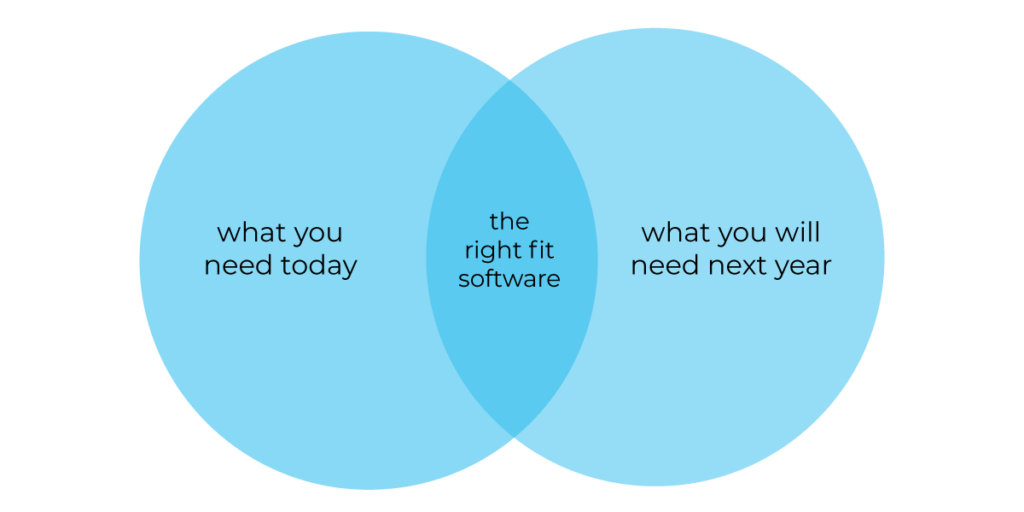
Look at what you want to achieve short term and find software that offers features to do that. It’s imperative to include your long-term goals too and be sure the software can scale as your organization grows and offer advanced features to further support your marketing, sales, and customer service teams. Platforms that are customizable, offer a breadth of integrations and an open API, and use artificial intelligence-powered tools, like marketing automation, are a good place to start looking.
Include Automation to Take Attribution to the Next Level
When you implement AI-powered marketing automation tools with marketing attribution, you add a powerful tool to your marketing toolbox. AI-powered automation tools enable teams to automatically send data from call tracking and attribution to automate the next steps, like a follow-up call or text.
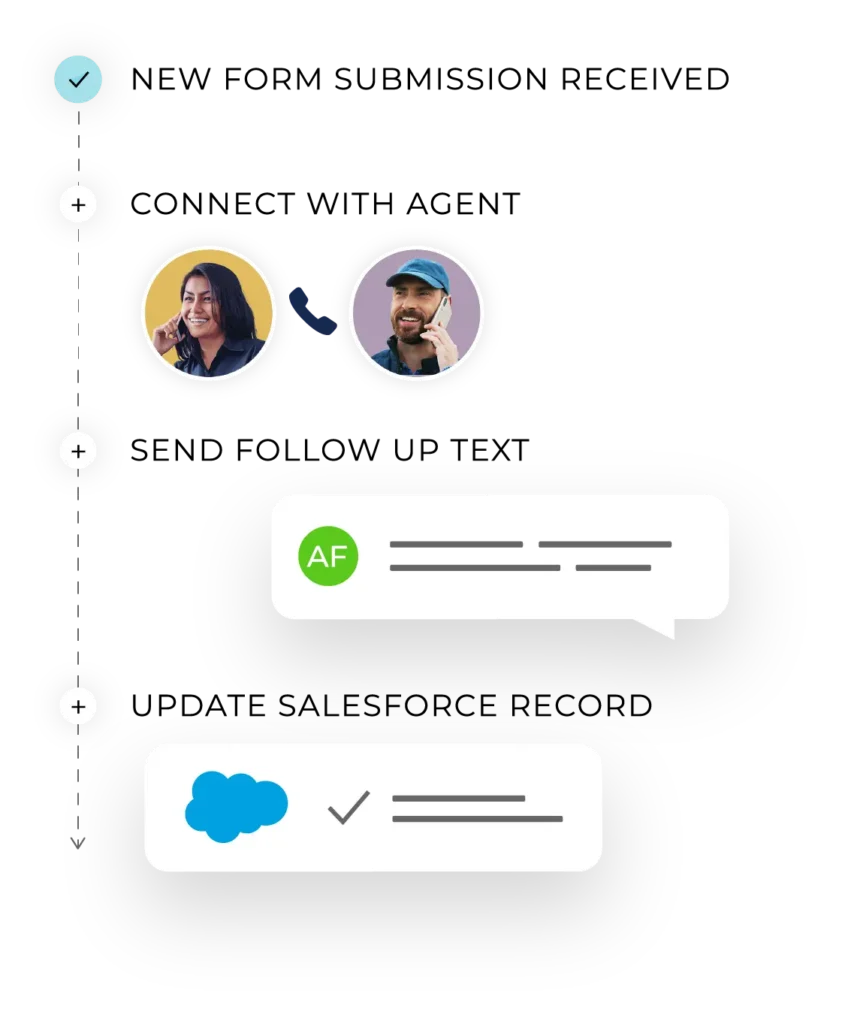
These powerful lead management tools help organizations beat out their competitors and connect with customers faster for an exceptional customer experience and ROI.
Tools like Smart Router, virtual agents, AskAI powered by ChatGPT, and more, help teams to effectively manage leads and their time to maximize sales and revenue.
If your topic pertains to business or businesses, give an overview of how and why to analyze your topic and how to differentiate between good and bad in the results of that analysis.
Final Thoughts
It’s essential to be able to account for every marketing dollar and how each helps to drive revenue. Marketing attribution multi-touch models paired with call tracking connect the dots in your data and help you to maximize your marketing budget–and efforts.
There’s a lot involved in marketing attribution and it’s evolving. Understanding your short-term and long-term goals will help you determine the best marketing attribution model to use now and which software can support your organization not only today but also tomorrow.
The right marketing attribution software helps teams do more with less, consistently prove ROI on every dollar, and drive revenue–even in turbulent times.
Check out CTM’s marketing attribution in action! Book a Demo today.
